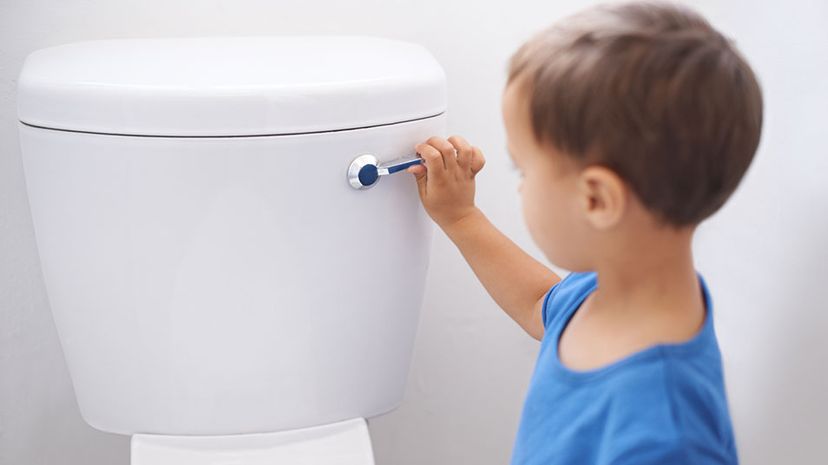
Why Does My Toilet Keep Running After I Flush? Find Your Fix!
Share
It's a common household annoyance: you flush the toilet, and yet the sound of running water persists long after. Why does my toilet keep running after I flush? Not only can this issue waste significant amounts of water, but it can also lead to larger water bills. In this article, we'll dive deep into the mechanics of toilets to unravel this mysterious and persistent issue. We'll provide tools for tech professionals and enthusiasts like you to tackle these plumbing challenges effectively.
Understanding the inner workings of a toilet isn't just for plumbers. As someone immersed in technology, the synergy between technology and plumbing might intrigue you. It's all about systems and mechanisms, just like your favorite tech gadgets. Understanding how these work can empower you to address and resolve such issues with a methodical, problem-solving mindset.

Common Causes for a Running Toilet
Running toilets are often due to simple issues that can be resolved without professional help. Let's explore some of the most common culprits:
1. Faulty Flapper
The flapper acts as a seal for the water tank - it lifts when flushed to release water into the bowl and then reseals. Over time, the flapper can become worn or warped, preventing a proper seal and causing the toilet to run continuously. If you're curious to explore a toilet's flushing mechanism, consider checking this article on toilet flush mechanism for a detailed breakdown.
2. Float Problems
The float in the toilet tank rises and falls with the water level, shutting off the water input when it reaches a certain height. If the float is set too high or is defective, the water can continue to rise and flow into the overflow tube, causing a constant run.
3. Chain Issues
If the chain connecting the flush lever to the flapper is too short or tangled, it can prevent the flapper from fully sealing. This slight gap allows water to flow into the bowl continuously.
Diagnostic and Repair Steps for Tech Professionals
As a tech enthusiast, you may enjoy the process of diagnosing and repairing your own plumbing issues. Here's a methodical approach:
Step 1: Inspect the Flapper
Open the tank and examine the flapper. If it's worn out or damaged, replace it with a new one. Remember, precision is key here, just like calibrating a piece of machinery.
Step 2: Adjust the Float
Check the float level and ensure it's correctly set to stop the water level about an inch below the overflow pipe. Adjust the float arm or the valve to achieve this level. For more insights on enhancing flush strength, consider reading this comprehensive guide on making a toilet flush stronger.
Step 3: Check the Chain Length
Ensure the chain isn't too short or too long. It should have just enough slack to allow the flapper to seal but not so much that it gets caught under the flapper.
Leveraging Technology for Smart Solutions
For a tech-savvy individual, roughing it with a traditional screwdriver might seem a bit archaic. Fortunately, technology has a foothold in the world of plumbing. Consider employing smart toolkits and apps that provide augmented reality for visual guidance in resolving plumbing issues. If the manual route isn't appealing, these tools can digitally illustrate the process and suggest advanced solutions.
Alternatively, you might consider upgrading to a smart toilet system, which links to smart home setups. These systems not only reduce water wastage through optimized flushing but also provide data that helps maintain efficient water use. These insights can resonate closely with your appreciation for data-driven decisions.

Frequently Asked Questions
1. Why does the flapper not seal properly?
The flapper might not seal properly due to wear and tear, mineral deposits, or misalignment. Regular maintenance can mitigate these issues and ensure your toilet functions efficiently.
2. Could a running toilet increase my water bill significantly?
Absolutely. A continuously running toilet can waste over 200 gallons of water a day, dramatically impacting your water bill. It's crucial to address the issue promptly. Read more on the repercussions of inefficient flushing when you flush incorrectly.
3. When should I call a professional?
If you've attempted all the basic troubleshooting steps and the issue persists, it may be time to consult a professional plumber. They can perform a comprehensive diagnosis of the system and provide a lasting solution.
For homeowners considering a more substantial upgrade or repair, consulting a professional not only helps resolve ongoing issues but can also provide insights into modernizing your home's water systems. You can find beneficial advice in articles like the essential bathroom remodeling tips beyond the toilet, offering broader home improvement guidance.
